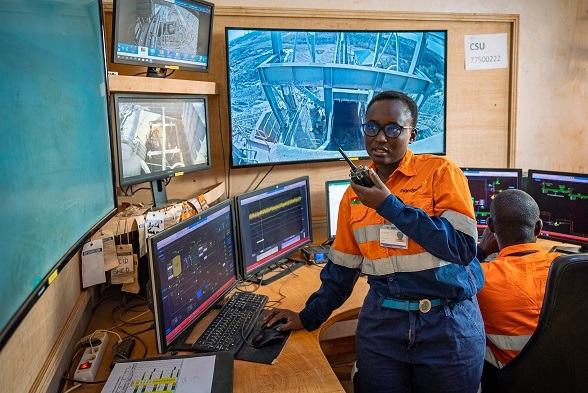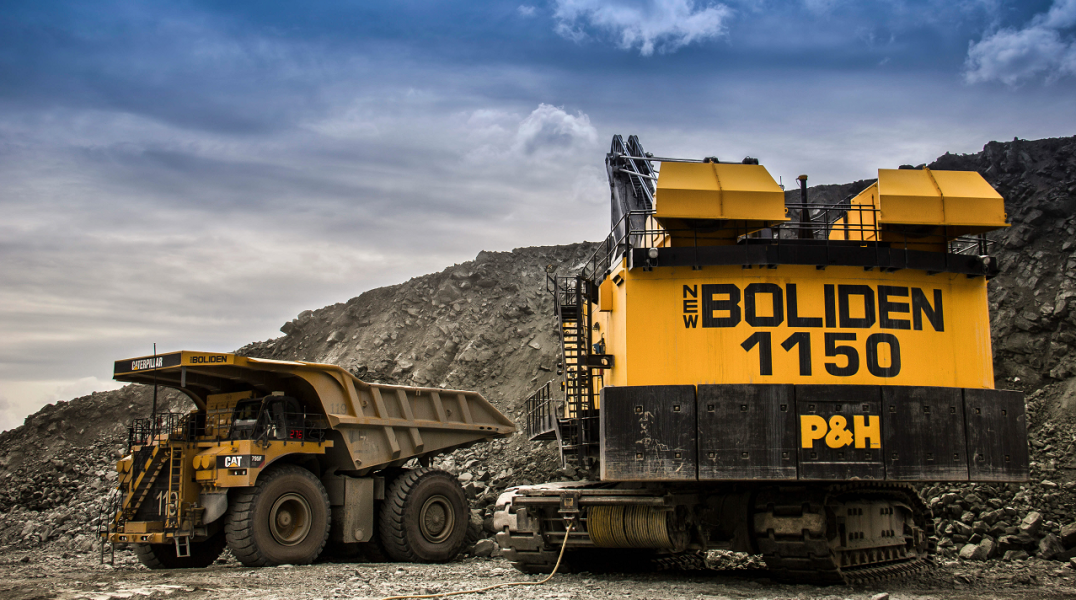Alan Swaby looks at one of the largest crane manufacturers in the world—which ironically comes from one of the smallest countries in the world.
Watch any strong man competition and the odds are there will be a Finn in the final. For a country with a population of far less than Greater London, Finland manages to create some of the biggest and strongest specimens in the world.
It’s only fitting, then, that one of the most important crane manufacturers in the world is also from Finland. Within the industrial sector, Konecranes believes it is in first place while in the port handling sector, it ranks as either third or fourth. “Within the sectors where we operate,” says vice president Mika Mahlberg, “we estimate that our market share globally is about 15 per cent.”
Even for those not in the crane business, the name might sound familiar. Konecranes used to be part of Kone Corporation—manufacturers of lifts, escalators and automatic doors, products that all of us will have ridden in or walked through many times. But in 1994, the crane division was the subject of a management buyout and went public just two years later.
To give some perspective to the company, Konecranes is just putting the finishing touches to the world’s largest goliath crane, being supplied to the Ecovix-Engevix shipyard in Brazil. This monster has a span of 210 metres and can pick up ship sections weighing 2,000 tons. At the other end of the scale, many thousands of family-run workshops around the world make their lives lighter with Konecranes chain hoists.
Alongside industrial cranes such as these are port cranes—the division headed by Mahlberg. “Cranes to handle containers account by far for most of the machines we make,” he says, “but we still need to have the full spectrum of options so that we can provide equipment to suit every specialist activity that an individual port or shipyard performs. These past 12 months have been our busiest for some years and output has been higher than it was before the recession in 2008. In 2010, sales exceeded €1.5 billion.”
Mahlberg puts the success that Konecranes has achieved down to several factors: “We are not typically the cheapest manufacturer in the industry,” he says, “but generally the orders that we want to win come from clients who are making a more rounded assessment of whole-of-life costs and for whom the highest levels of productivity are the key to better value. Therefore, we put considerable effort into maintaining technological superiority and pushing the boundaries of what can be achieved. Having said that, though, customers know that the designs we provide are well proven and more than reliable.”
Cranes might be bigger and reach further than they used to do in order to satisfy the bigger vessels in service these days but on the whole they don’t look much different to how they did 20 years or more ago. On the other hand, the way they operate has changed enormously: the speeds at which they accelerate and travel, as well as the speed at which objects are lifted and lowered, are all significantly faster than they were.
“The crane design plays a major role in this: the steel structure has to cope with the millions of changes in stress that a crane has to contend with in its life as loads are lifted and lowered,” explains Mahlberg. “But equally important is the contribution that comes from advances we have made in control systems. All Konecranes designs share similar technology and components. As well as the software we have developed, the volume of cranes we make justifies having our own manufacturing facilities rather than being obliged to buy proprietary products from others. This represents a major technological difference between ourselves and our competitors.”
Commonality of design also makes life easier to provide service for any Konecranes product. With close to 5,000 technicians in 578 service locations across 46 countries, a service engineer is never far away from a customer. Additionally though, by having no distinction in the way any of the products operate, a service engineer taking care of an overhead ladle crane in a steel mill can just as easily service the same client’s bulk iron ore and coal handling cranes.
The most common types of crane found in a port are likely to be rubber tyred gantry cranes (RTGs) or rail mounted gantry cranes (RMGs). These are the bread and butter machines of any installation handling containers, with RTGs giving complete freedom of movement while RMGs are to be found at container terminals or inter-modal junctions—loading containers onto trains, for example.
Over the years, operators and crane designers have tried to squeeze the last drop of productivity from these machines by making them work harder and at greater levels of safety. The limiting factor, as always, has been the human component. Some drivers are more skilled than others and some work harder, while no-one likes working in rain or high winds. When incidents and accidents occur, schedules go out of the window. So the holy grail has been to have a completely driverless scenario: and this option is getting ever closer. Already, Konecranes produces automated stacking cranes (ASC) that can follow pre-programmed instructions to a very large degree, although in practice—and not dissimilar to automatic airline pilots—touch downs are generally carried out by human operators, albeit working from a remote location.
“The advantages are enormous,” says Mahlberg. “By working in a cleared environment, safety issues are virtually eliminated. Machinery can work around the clock with no diminishing of performance. Rain or shine—it makes no difference to an ASC. Productivity is appreciably higher.”
These machines carry a hefty price premium over a manually operated equivalent but since Konecranes sold its first ASC five years ago, the number of sales has been rising rapidly. Recent significant investments in ASCs have been made in Abu Dhabi and Barcelona, where 30 and 36 ASCs respectively are under delivery.
Developments in crane engineering are gradual and evolutionary so don’t expect quantum leaps. Mahlberg is content to work hard to retain the company’s leadership in technology while maintaining the huge investments in labour and resources constituting the high level of customer service Konecranes provides. Just like the strong men of Finland, he knows that only those who work hardest will ultimately win the prizes.
DOWNLOAD
 Konecranes-EMEA-Jan12-Bro-s.pdf
Konecranes-EMEA-Jan12-Bro-s.pdf













